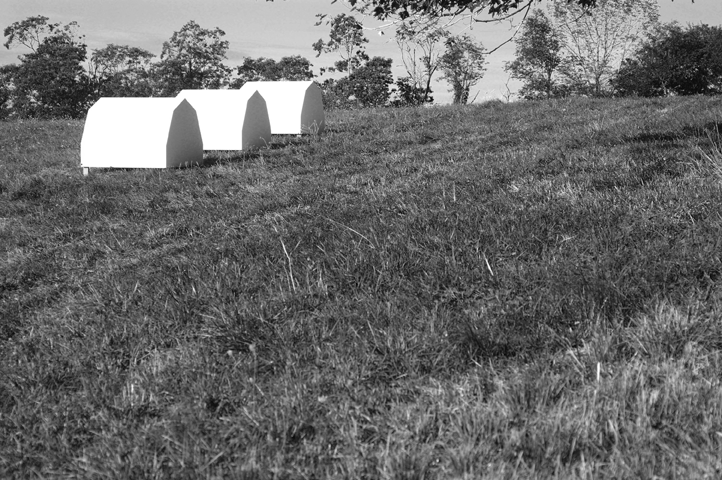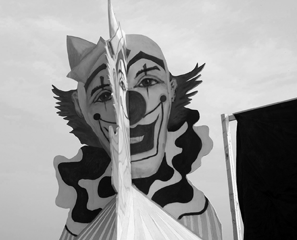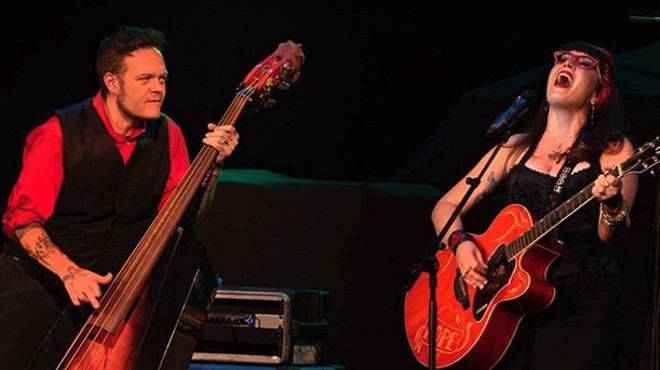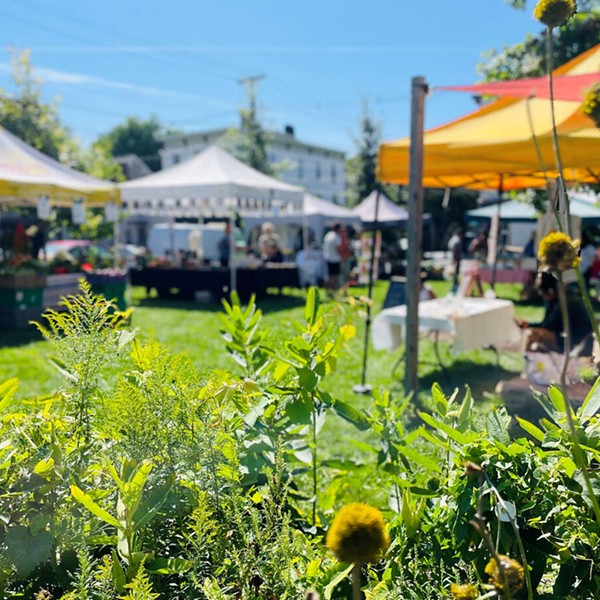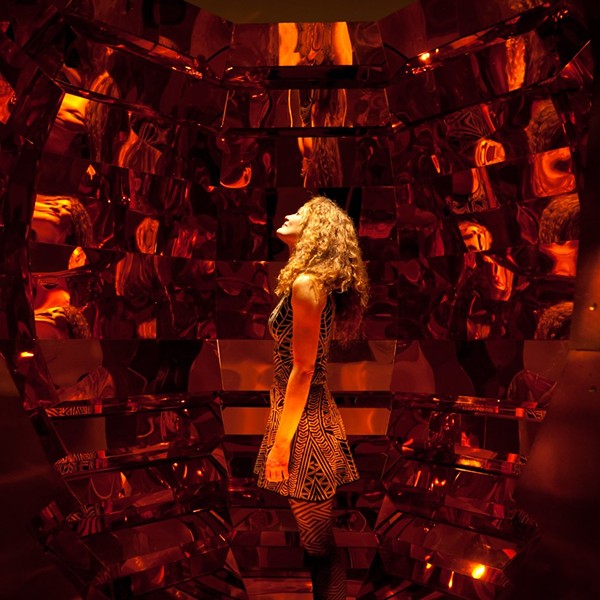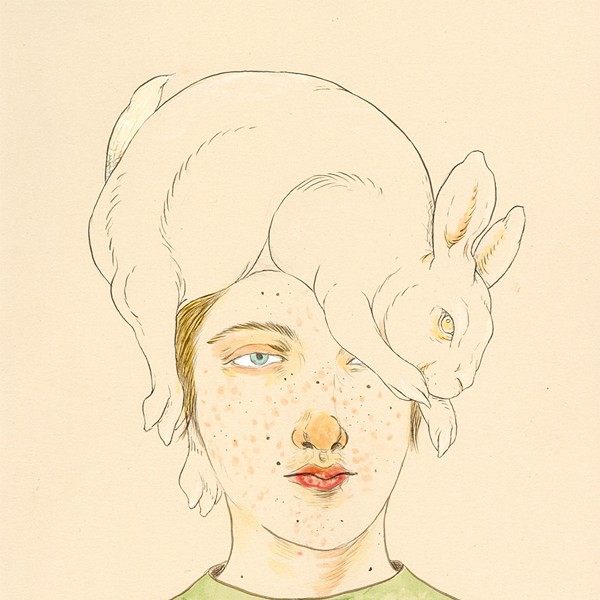When you install art outdoors, there are always a number of things to keep in mind. Are the materials sufficiently weatherproof? Are there sharp projections, moving parts, or other features that might endanger members of the public? Will it be able to withstand a herd of 40 Black Angus steers?
Wait! There’s something about that last question that seems a bit unusual….
The Outdoor Sculpture Installations exhibition, organized by Collaborative Concepts at Saunders Farm in Garrison, is one of the more decidedly unique environments in which I’ve ever encountered art. This is the second year that Collaborative has organized an exhibition here, and now I regret having missed last year’s edition.
The landscape is amazing—broad grassy fields (some steeply pitched), tucked away a stone’s throw away from Route 9G in Garrison, one of the last largely undisturbed stretches of agricultural land left in Putnam County. On a crisp fall day there can be nothing quite as spectacular as hiking up through these fields (farmer Sandy Saunders only asks that you close the gates behind you), with the views framed by a clear blue sky and nothing but the wind rustling through the trees on the soundtrack. Oh, and the occasional bunch of cows passing through.
Collaborative Concepts has gone through a number of different manifestations since its founding in 1999. At its core is a group of serious professional artists, whose goal is to organize exhibitions (over 40 so far) designed to provide “exceptional cultural experiences.” When I first encountered the group, its digs were in a large storefront space on Main Street in Beacon, showing consistently engaging work by the likes of Grace Knowlton, Michael Pilon, Lyndon Preston, and others. When the landlord raised the rent beyond the modest means of the group, they moved briefly to Bulldog Studios in Beacon, and now since Bulldog has closed, they’ve reinvented their exhibition space to take in over 100 acres of Sandy Saunder’s cow pasture.
For a sculpture show, there are a few points at which painting (or pictorial concepts) play a surprisingly significant role. Richard Bruce’s small, abstract paintings riff on the convention of the trail marker, tacked up on tree trunks along a haphazard cow trail through some woods on the edge of the fields. But instead of being painted a standard, single utilitarian color, each marker is an aesthetic cosmos in and of itself—soft pastel washes of white, sea green, and blues, like abstracted versions of Symbolist paintings by Odilon Redon. Strictly speaking, they represent nothing, yet functionally they manage to pull the feeling of open sky and atmosphere into the wooded path that they mark, a strikingly beautiful use of the location.
This sort of painterly strategy is reversed in Robert Brush’s witty Four Landscape Paintings, located on the westernmost edge of one of the fields. Just off the pasture, alongside a preexisting hiking trail through the property, Brush has erected a section of wall, painted deep red (a favorite of Victorian decorators). He has cut four holes through the wall, each framed by an ornate bit of gold molding. The site is located near the top of a hill that provides a sweeping view of Storm King Mountain and the Hudson, so when you stand nearly anywhere in front of the piece, you’re presented with four real-time Hudson River School landscape “paintings”—an interesting reminder of the conventions of picture-making that were so successful in the 19th century.
According to Eric Arctander, one of the organizers of the exhibition (and one of its artists as well), before accepting any artist’s proposal, the artist had to visit the farm, in order to encourage work that responds to, and takes full advantage of its unique setting.
This strategy has paid off in a number of cases, perhaps most spectacularly with Scott Boyd’s Portrait of a Barn, a series of three white-painted wooden modules that abstractly emulate the mass/shape of a barn (think Monopoly houses), lined up on a steep hillside. If you hike up beyond the three forms, to the uphill side of the group, you realize that from a particular angle of view, they line up perfectly with an actual large white barn on the property, which sits across the hollow, on a hill opposite. The artist has accommodated the shift in scale by sizing his modular barns to visually match the apparent size of the real one, offering a startling perceptual experience that updates the ideas of both Minimalism and site-specificity.
Naturally, not everything in the show quite clicks—Max Yawney’s Spinning Clown Heads/Black Flags attempts too many references in an overly obnoxious carnivalesque mode that seems entirely out of place here, while Michael Natiello’s The Scratching Post: Saunders Farm Redoubt, an eight-foot plywood cube, admirably takes on board a significant piece of local history (a Revolutionary-era military redoubt was located nearby), but fails to deliver with a series of “garbage mandalas” inside that shift the focus in an entirely different direction. (I don’t think the patriots did much New Age meditation in their redoubt.)
Perhaps the best contribution of this exhibition happens on the macro level, however—the organizers specifically invited the local homeowners’ association to come to the opening, building a bridge between past and present. The homeowners, mostly suburban residents brought to the area by more recent developments in the real estate market (i.e., turning agricultural land into residential developments), had formerly thought of Saunders Farm only as an annoyance, when a slow-moving tractor held up traffic on the road. They were amazed to discover the beauty of the farm itself (in addition to the interest added by all the artwork), and to learn that Saunders allows hikers and nature-lovers free access to the property in all seasons (provided the gates are shut behind you, of course).
With this new appreciation of the undisturbed farmland—and even more, what an unfortunately unique resource such a place represents today—perhaps this will turn out to be an instance where art both enhances the life of the community, and helps put the brakes on the juggernaut of gentrification and development.
Now there’s a welcome twist to the usual story, one I’ll be happy to listen to until the cows come home.
“Outdoor Sculpture Installations at Saunders Farm,” organized by Collaborative Concepts, runs through October 31 at Saunders Farm, 853 Old Albany Post Road, Garrison. A mid-run reception will be held on Saturday, October 6, from 2 to 6pm. (845) 528-1797;
http://collaborativeconcepts2007.blogspot.com.







